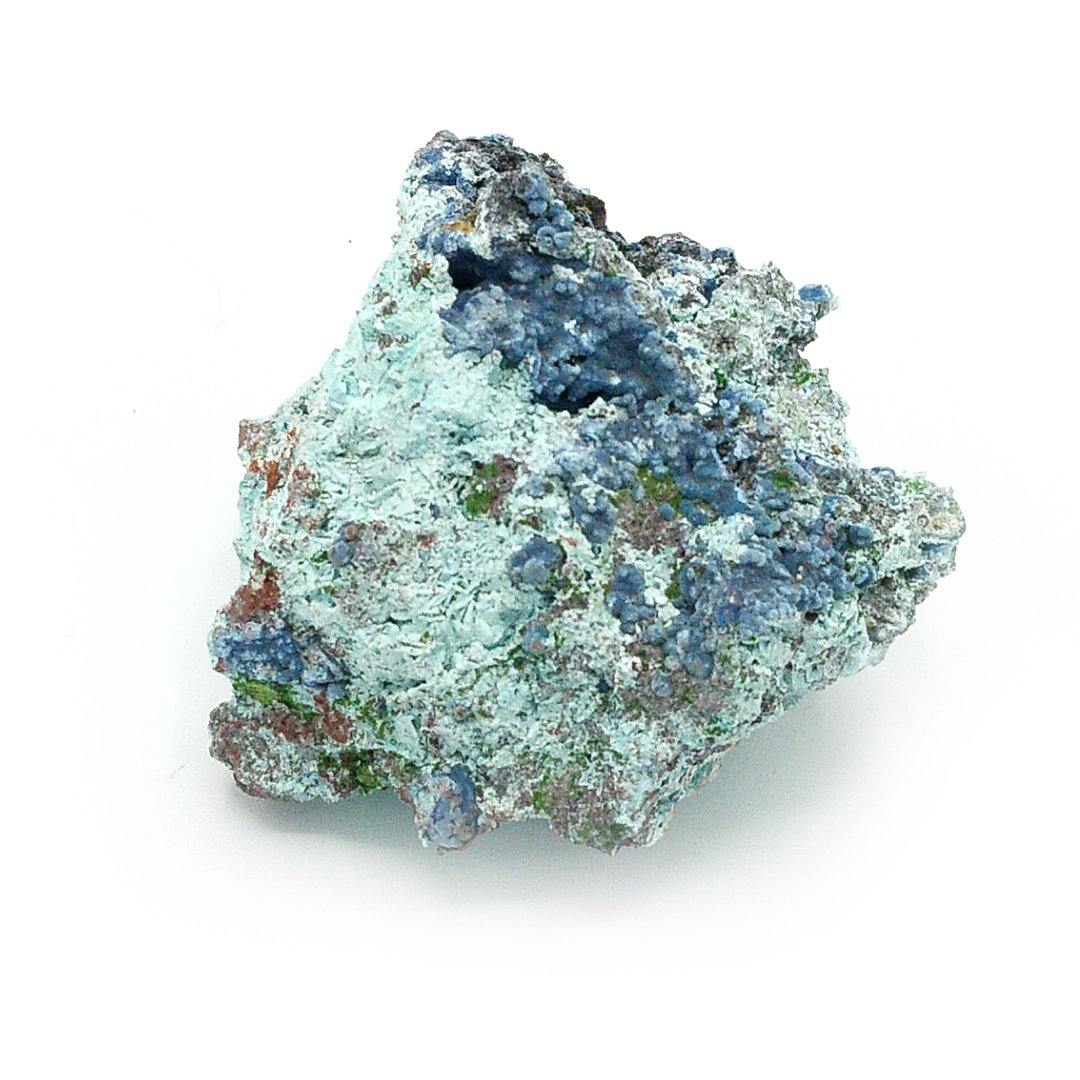
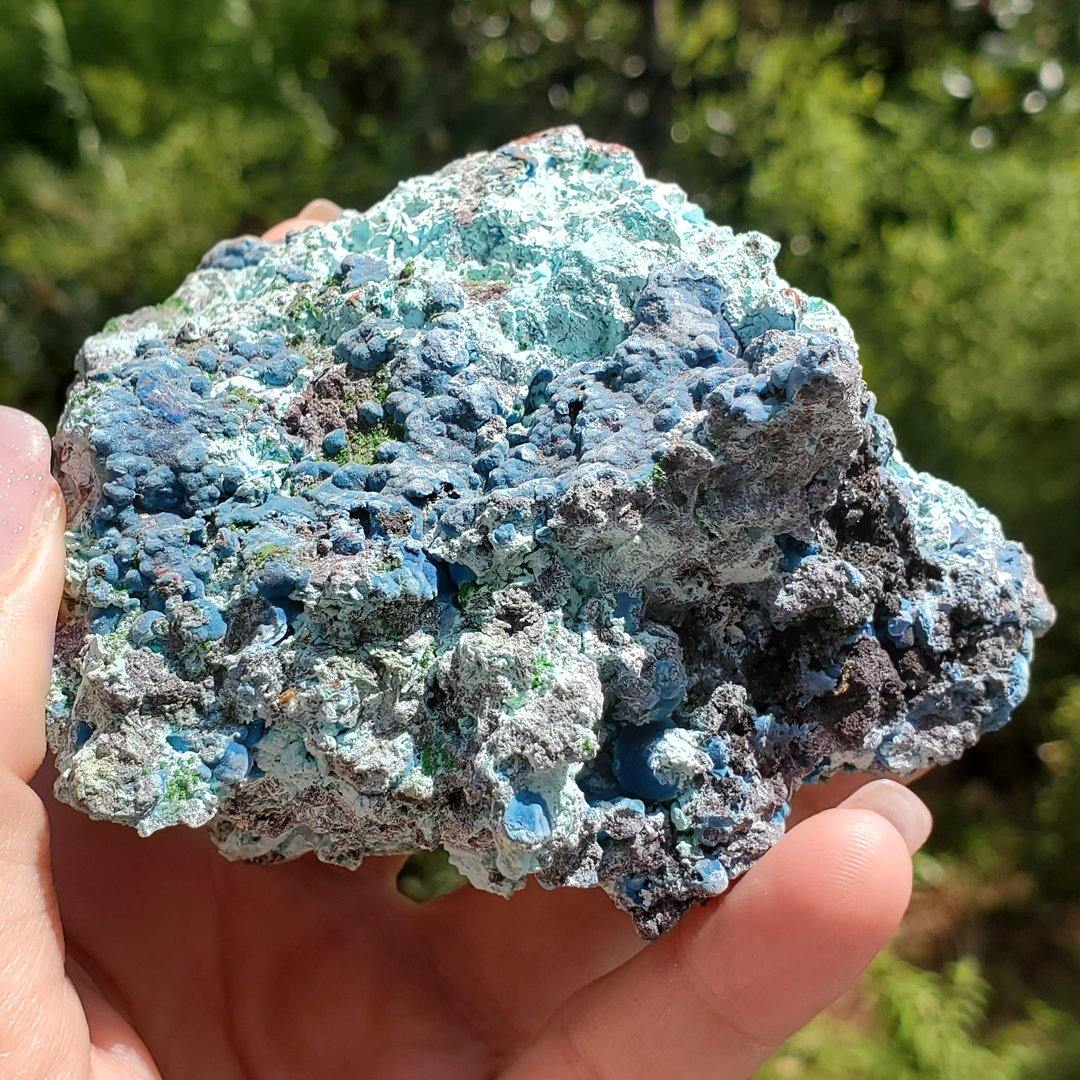
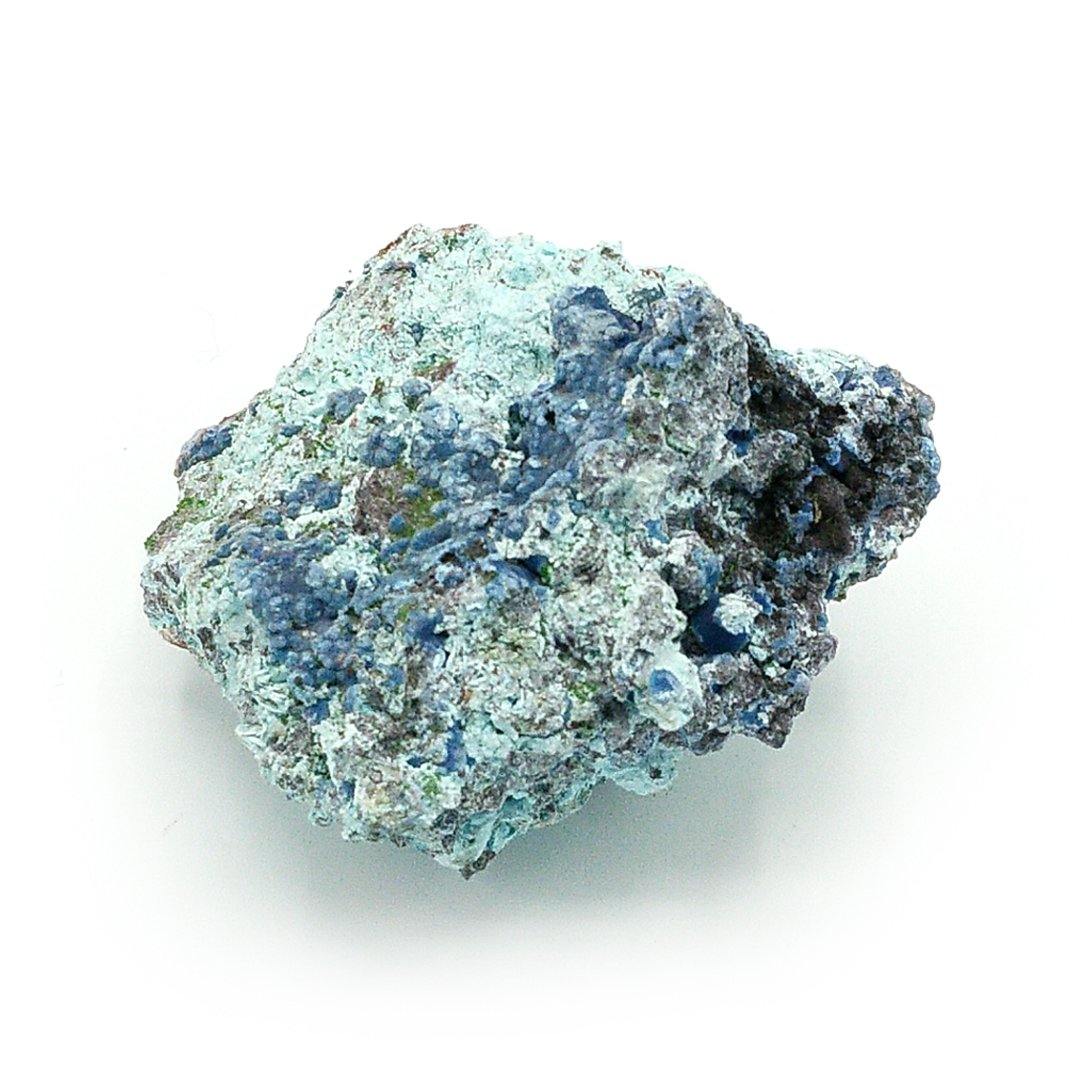
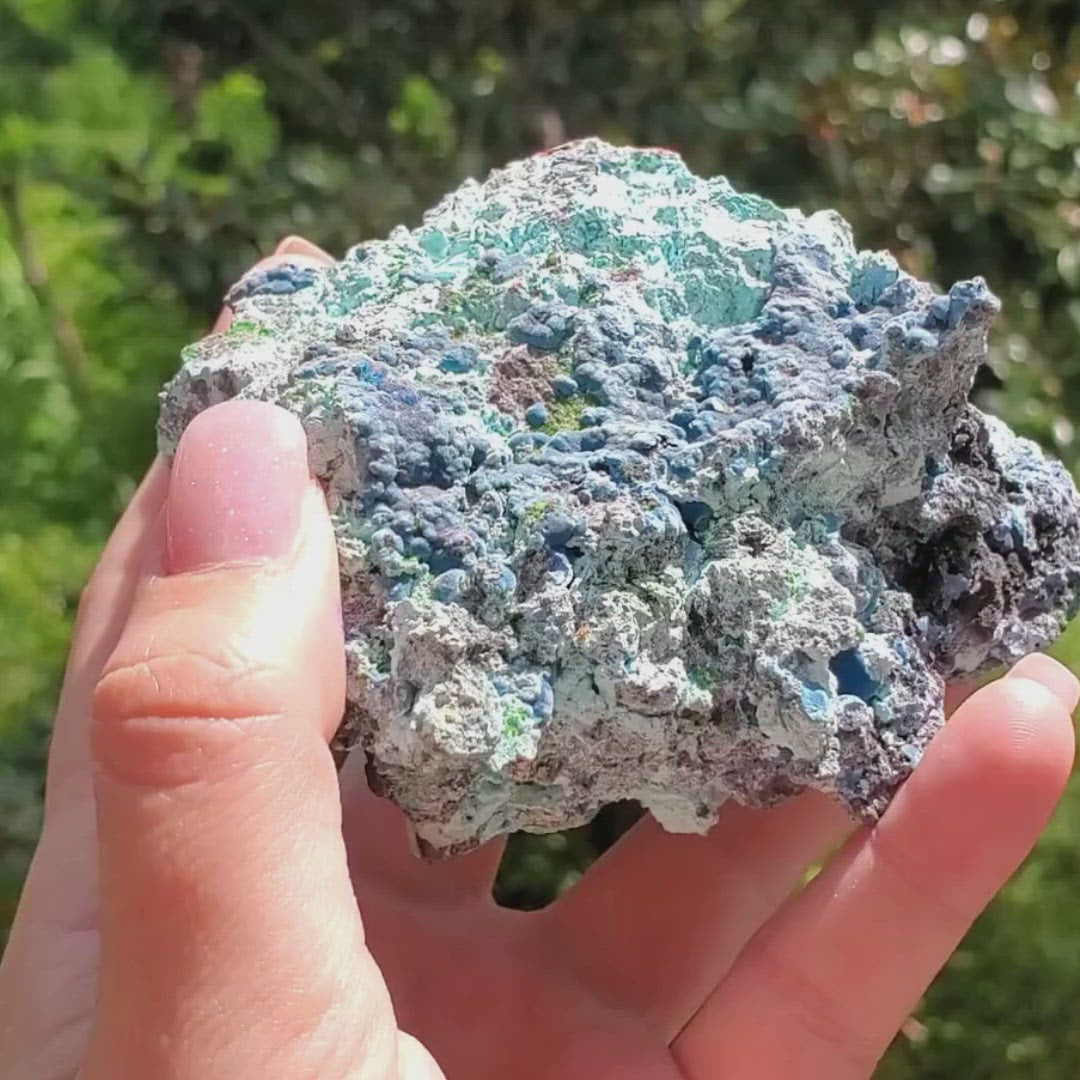
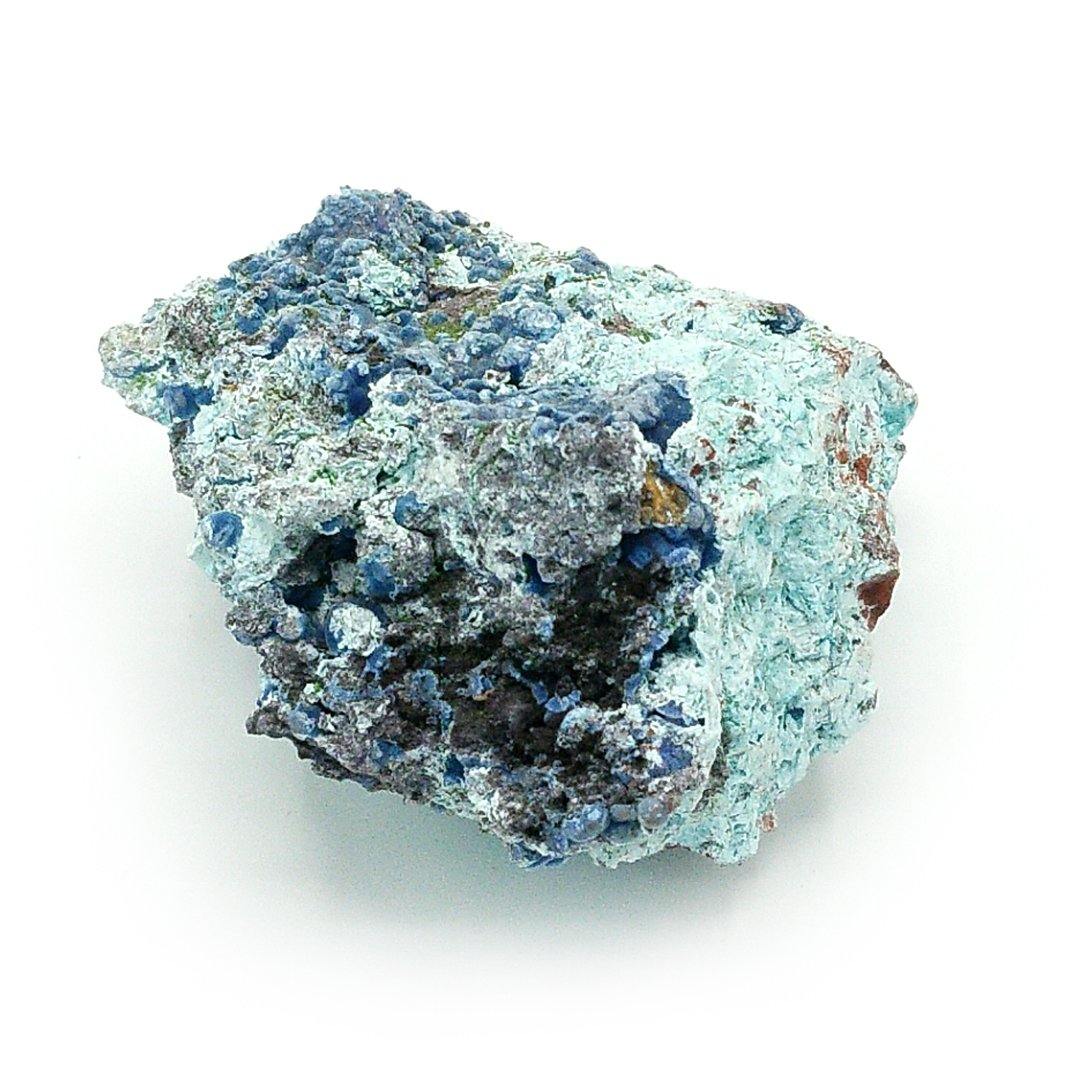
Shattuckite, Duftite, and Aurichalcite Specimen from China
All of the minerals in this specimen are rich in copper, meaning that it was most likely recovered from a copper mine in China! Always remember when you see blue in a mineral, think copper! Shattuckite is a copper silicate hydroxide mineral. It was first discovered in 1915 in Bisbee, Arizona, and is named after the Shattuck copper mine in which it was found. Duftite was first discovered in 1920 in Tsumeb, Namibia and is a Lead Calcium Copper Zinc Arsenate Hydroxide. Duftite is an oxidation product of weathered ore deposits so we’re starting to get a clue on how this specimen was formed in the copper mine. Duftite is often associated with other beautiful and/or rare oxidation minerals. Aurichalcite is a very fragile carbonite material and is silky and fibrous. It’s a secondary mineral to copper and zinc deposits and given the shattuckite and duftite in this specimen, that makes total sense! The name aurichalcite comes from the Greek word for Mountain Brass.
Metaphysical: The mineral compositions of this specimen make it a special stone for pure expression of self.
Shattuckite is a great mineral for public speakers as it’s super helpful for our communication and intuition. It’s also great for those who like to dabble with oracles, channeling, or becoming a medium.
Duftite stimulates the heart chakra aiding relationships to truly love each other and inspire loving communication, giving insights into solving life’s problems including finding selfless answers to your biggest challenges.
Aurichalcite enhances personal freedom and inner harmony, allowing us to release our old ways that don’t serve us anymore. It helps us feel inspired and creative. It helps us have a positive outlook on life.
Main Stone: Shattuckite
- Weight: 7.1oz / 201.282g
- Dimensions: 3.3" x 3.25 x 3"
- Treatment: None
- Source: China
- Metaphysical: Solar Plexus (3rd), Heart (4th), and Throat (5th) Chakras: Intuition, Loving Communication, Pure Expression, Creative Problem Solving
Cleaning: The compositions of these specimens requires extra care when cleaning. A gentle cleaning with a soft damp cloth or with cool soapy water is best. Abrasive cleaning and heat will damage the stone.
Gemstone(s)
Read more about this gemstone here:
Main Gemstone Shape
Main Gemstone Dimensions
•
Total Carat Weight of Main Gemstone
•
Metal(s)
Choose options





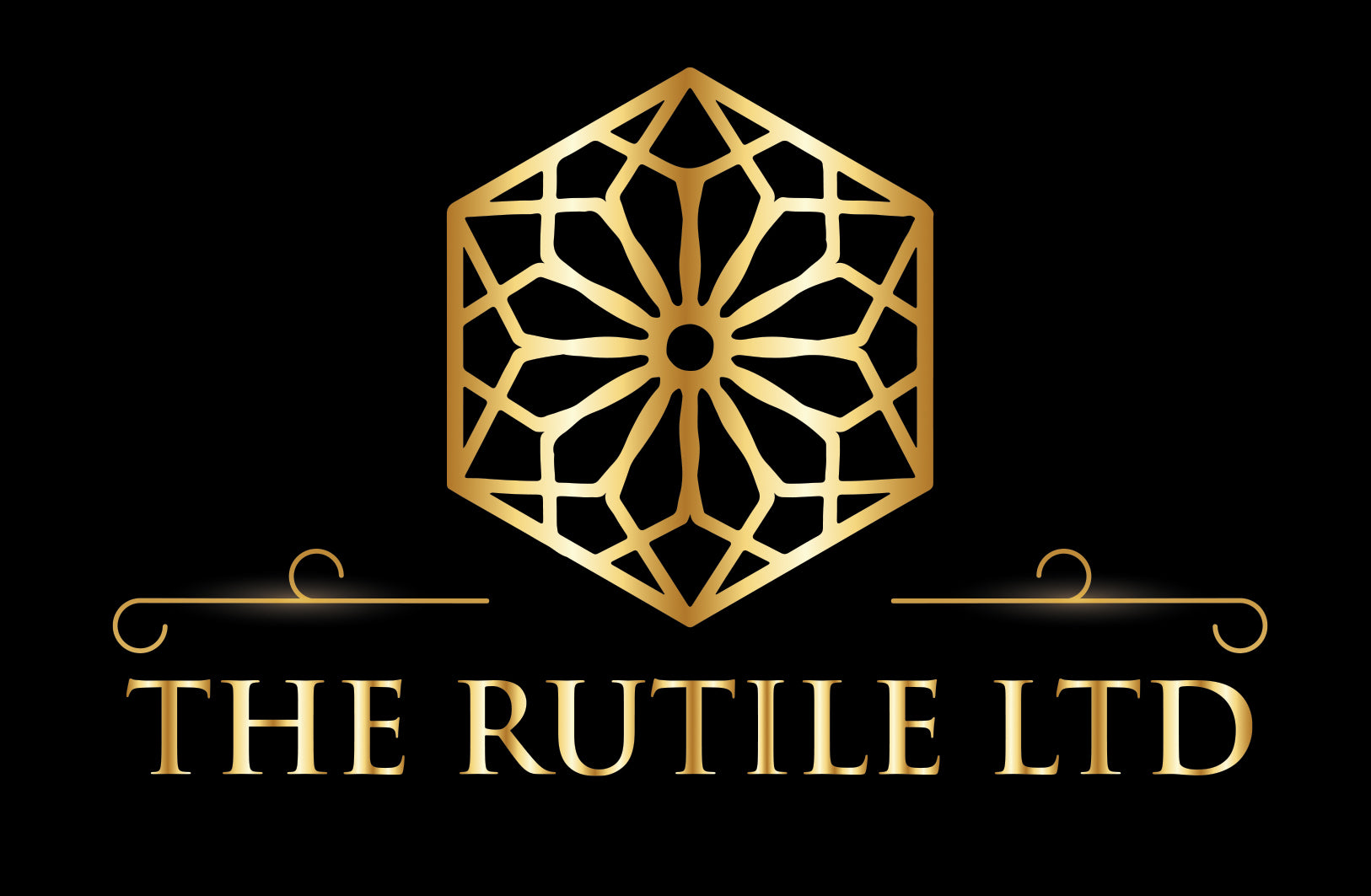
 More Details
More Details







